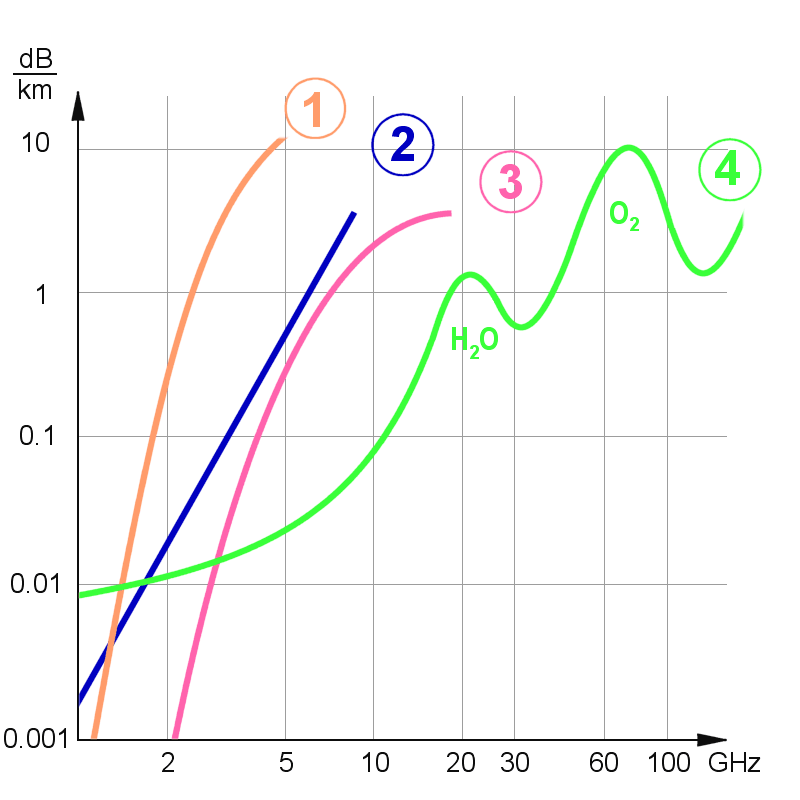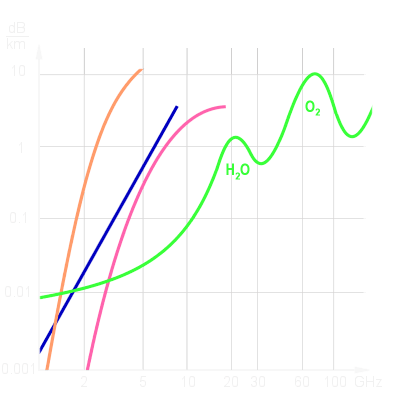Absorption

Figure 1: Electromagnetic absorption of the earth's atmosphere, ① heavy rain, ② fog, clouds, ③ moderate rain, ④ molecular dispersion

Figure 1: Electromagnetic absorption of the earth's atmosphere
The electromagnetic wave may be partially or totally absorbed by an absorbing medium due to atomic and molecular interactions (In this process energy is transferred to the substance and this may cause significant changes to occur within the absorbing medium; the radiant energy is converted into heat mostly.)
The absorption of electromagnetic radiation is insignificant at low frequencies less than 3 Gigahertzes (or a wavelength longer than ten centimeters, or 4 inches) by clear weather conditions. Not till then the frequency reach the resonant frequency of some molecules contained into the earth's atmosphere, the intensity of a beam of electromagnetic radiation is attenuated in passing through this medium considerably.
This absorption depends on the frequency and the path length therefore.
Not condensed water vapour, or the so-called relative humidity depends on the temperature too. The air temperature and the air humidity affect adversely the absorption too.
Atmospheric absorption losses consist of an atmospheric basic absorption as well as a strongly weather-dependent auxiliary absorption by fog and rain. The electromagnetic waves are weakened when penetrating air and water vapor layers. In this process mainly water vapor and diatomic oxygen are involved. A part of the electromagnetic energy is converted into heat, another part becomes scattered due to the molecular dipole function.
The diagram shows that the absorption increase as the rates of humidity rises. Furthermore, absorption increases with higher transmitter frequency.
Also, one can see that all frequencies are not equally suitable for all radar applications (e.g., a high frequency is not suitable for long-range radars). The very strong absorption at about 75 gigahertz's caused by the oxygen molecules practice the radar-based Pre-Safe Brake Assist Plus developed by Mercedes. The maximum range of the radar is limited on the desired measure by this and mutual disturbing influences therefore are to avoided.
In summary atmospheric absorption losses are always present and cannot be avoided.
Reference: Recommendation ITU-R P.676-10 “Attenuation by atmospheric gases”
